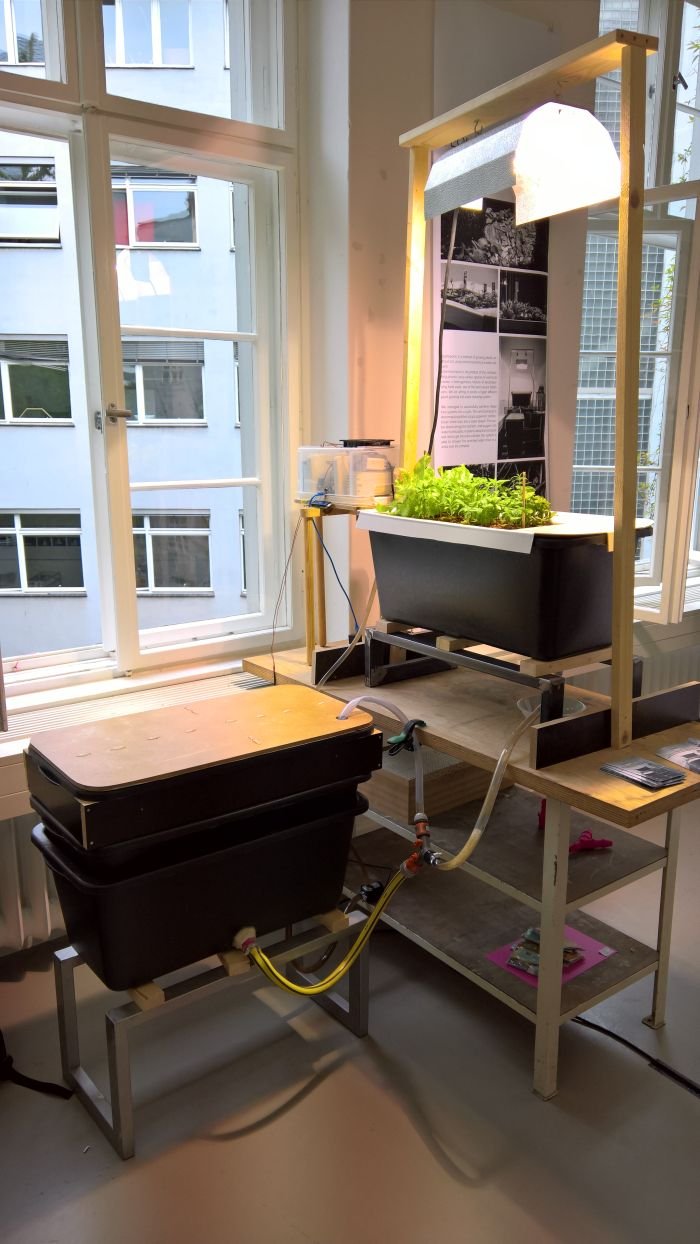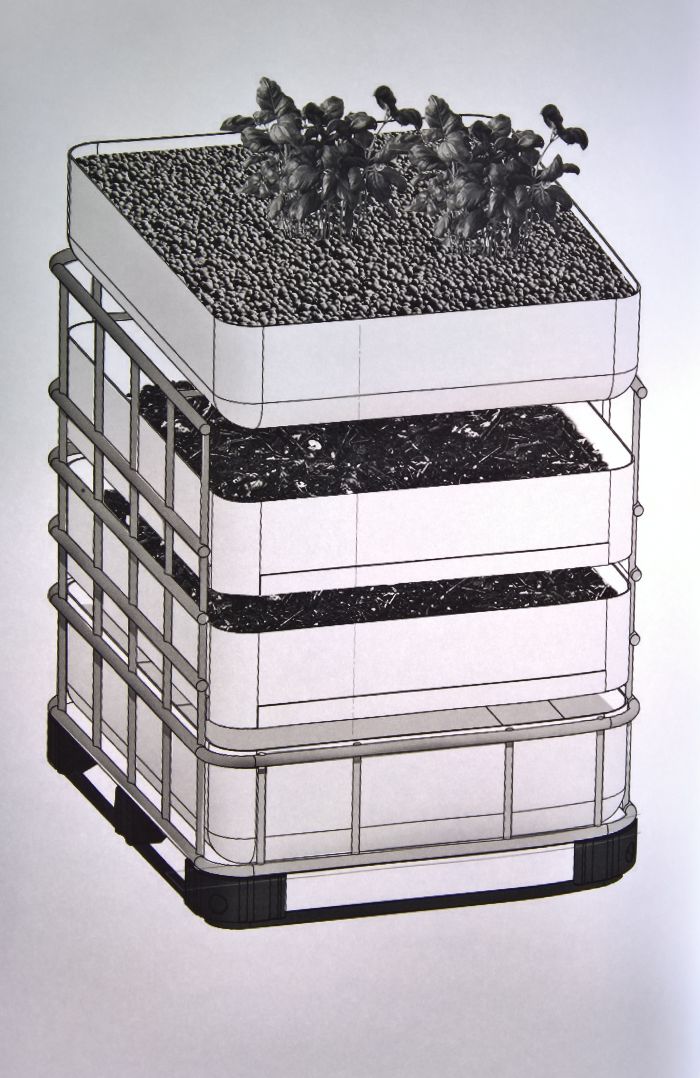Owing to the unique nature of Berlin's history and geopolitical relevance, the (hi)stories of all the city's cultural institutions are invariably complex. And the number of such institutions greater than in most comparable metropoli*. Few other cities can boast, for example, two public zoos, three public operas or four public universities. And while three of Berlin's universities offer individual courses in subjects such as architecture, theatre studies or music, there is only one which offers an education in all such genres. And in design: The Universität der Künste Berlin.
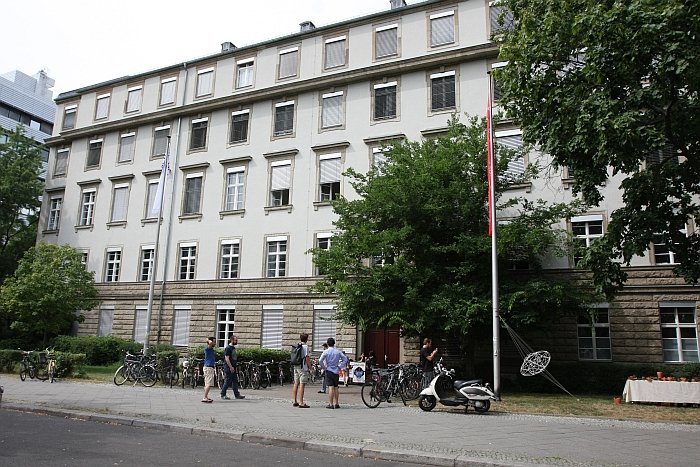
As a seat of artistic instruction the Universität der Künste, UdK, Berlin can trace its history back to 1696 and the establishment of an academy for drawing, painting and architecture in Berlin by the then Prince-elector Friedrich III; an academy which together with institutions such as the Royal Library in Berlin and Halle University were part of Friedrich's attempts to raise the profile, importance and quality of culture and education in his domain. In the day important "economic" and political factors.
The subsequent centuries and decades saw the amalgamation with other applied arts, fine arts and associated institutions before in 1975 the then College for Visual Arts merged with College for Music and Performing Arts to form the Hochschule der Künste - College of the Arts - as the central arts school for West Berlin. And thus a major draw for all those West German creatives looking to avoid national service: West Berlin residents being spared such and this special status was a major driver of the artistic and creative community that developed in West Berlin and which in many respects still dominates impressions of Berlin creativity.
In 2001 the HdK became the UdK and today with some 3500 students is Germany's largest art college. If not Europe's.
Despite its status and importance as an art college the majority of the UdK Berlin's students are to be found in the design department, at the last count around a third of the total, where following a joint first semester they haven have the choice of specialising either in Product or Fashion Design.
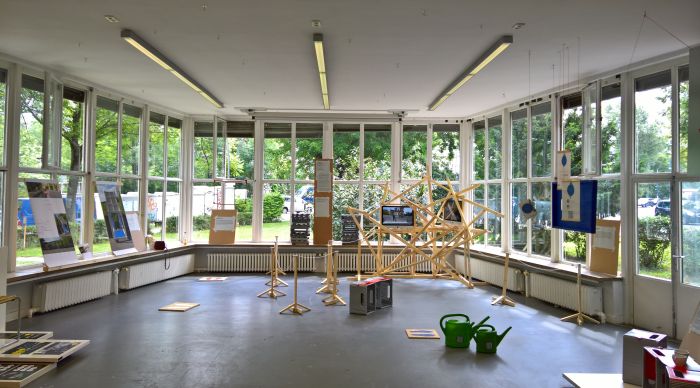
There is something reassuringly familiar about the Universität der Künste Berlin Rundgang summer exhibition, never exactly the same, but always so similar that we could probably find our way around it blindfolded. Which would be stupid. If not counter-productive. And dangerous.
And so, for example, one can be certain that on the fourth floor you will find the Technology & Construction classes, which we did, this year including Mutabor which involved reshaping a PET bottle and then extending its functionality through a 3D printed component; Sandguss - Sand Casting - which asked the students to create an object via the sand casting process and the perennial favourite Abgewickelt & Aufgerollt in which an object has to be created from a 1 sqm piece of sheet steel.
The fourth floor also houses the Aula, which this year staged a somewhat disappointing presentation of the project Between on and off showcasing objects created in context of the OSRAM Light Award. Disappointing because on the one hand is was fairly lifelessly presented and on the other although the works were all conceptual there was no description of what they were supposed to do or be. Far less function. There wasn't even the name of the student. Just an object that may or may not do something if you do or don't do something. And that in near total darkness. Which is rarely satisfying. Yes one can ask. But to do that for every lamp is really a drag, and then when every visitor has to ask for every lamp you quickly end up in chaos...... Short description, job's a good 'un. And normally the UdK are very good at such presentations.
Floors two and three are fashion, floor one has the results of selected current co-operation projects, and the ground floor the foundation course, the Kunst + Design BA/MA, and most importantly the cafe. This year we had coffee and cake.
The cafe is important not just for sustenance, and the deep dub groves it provides, but because it allows us an untroubled, quiet moment to dwell on what we have seen, which this year included.....
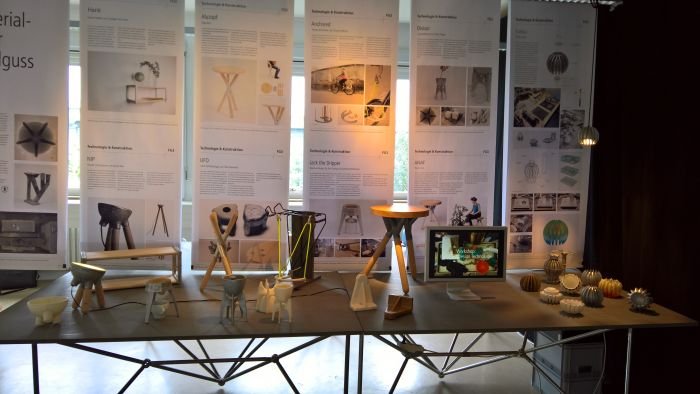
It is often the small things, the almost imperceptible, which give the strongest, most potent signal. The trick is spotting them. Much as Tom Schneider has.
Does anything more perfectly underscore the reality of our modern society than the ubiquitous overfilled urban litter bin?
Back in the day when the first public litter bins appeared, no one had any litter. Or at least not in comparison to today when the average litter bin has to cope with our instant-gratification-throw-away-consume-again-look-at-me-look-at-me society. But what litter bin can cope with the current flood of consumer waste? And for all the sheer space that all the coffee to go cups take up in a bin?
None.
The result is the ubiquitous overfilled urban litter bin.
With Alles für die Tonne Tom proposes a very intelligent solution.
If one assumes the problem is the volume not the quantity nor weight of waste, and that that volume is composed of compactable material - coffee cups, fast food packaging, free newspapers, cigarette packets, et al ... then why not compact it in situ?
It's what happens to a lot of industrial waste.
Alles für die Tonne proposes simply stepping on a pedal which leads to the compaction of the contents and thus frees up space for your coffee cup. And we can well imagine, without actually knowing or having any specialist knowledge, that it also makes the collecting of the rubbish easier and more efficient. Being as it is a compressed lump.
While solar powered, self-compacting litter bins are available, we like both the lower tech solution proposed by Tom and also the fact it makes you aware that you are having to compact. There is a direct connection between the action of placing and object in the bin and the consequence of such. The solar powered bin is always empty. Alles für die Tonne reminds us that bins get full. Which isn't actually their purpose.
Clearly such as system such does involve litter bins, and for all litter bin mountings, that can withstand the forces applied, and that nobody throws anything non-compactable into the bins...... Otherwise it would appear a model well worth investigating further..... As would a reduction in the amount of waste we all generate. And yes, that includes you......
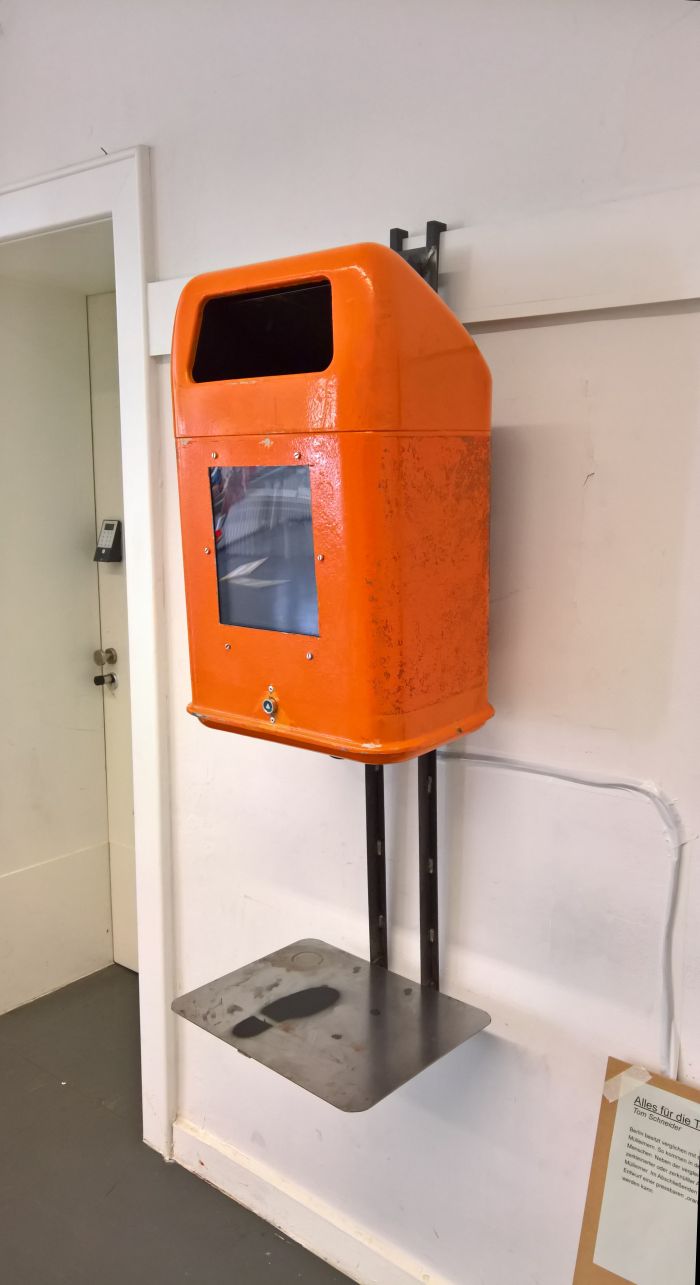
Arguably the thing we have seen most of on our #campustour is the mealworm and other invertebrates intended for human consumption. And for all systems for rearing such.
Entomophagy is a system specifically designed for the home and one that can be placed on any kitchen surface. Based around a very simple construction principle and presenting itself with a very accessible and uncomplicated form language, much more DIY than the majority of comparable systems we have seen which tend to be pitched as high-tech, Entomophagy is clearly aimed at, and we would argue well suited for, the average, everyday home.
The question is, will the average everyday home ever decide that it is time to start farming their own insects for food?
How close are you to investing in an insect propagator? Table top or something larger in the cellar?
We genuinely cannot see that day coming.
At least not this side of the apocalypse.
For persuasive as the arguments in favour of an insect diet may be, not only are the alternatives far too easy, but there is a very strong cultural element to what we eat, which isn't to say we are rigid and inflexible in our choices, is however to say we never move that far outwith our comfort zone.*
Plus for us things are currently moving in another direction.
As we noted in our review of the exhibition Food Revolution 5.0. Design for Tomorrow’s Society at the Museum für Kunst und Gewerbe Hamburg, our current agricultural systems are unsustainable, our current food consumption patterns are unsustainable and an ever increasing number of people are understanding that. Understanding that there must be change.
But the first step has to be bringing a degree of sustainability back into our existing systems and patterns; we have to rediscover the point of farming and eating, re-establish a healthy relationship to how and what we eat.
And once we have achieved that, then the argument in favour of an insect diet occurs in a different context, is no more one made on the basis of being an alternative to our current system but becomes an augmentation of a more sustainable and smaller scale system.
And as such a lot more persuasive.
And then we will need systems such as Entomophagy.
But first we need the changes. Or the apocalypse. The latter currently being in many respects the more probable....
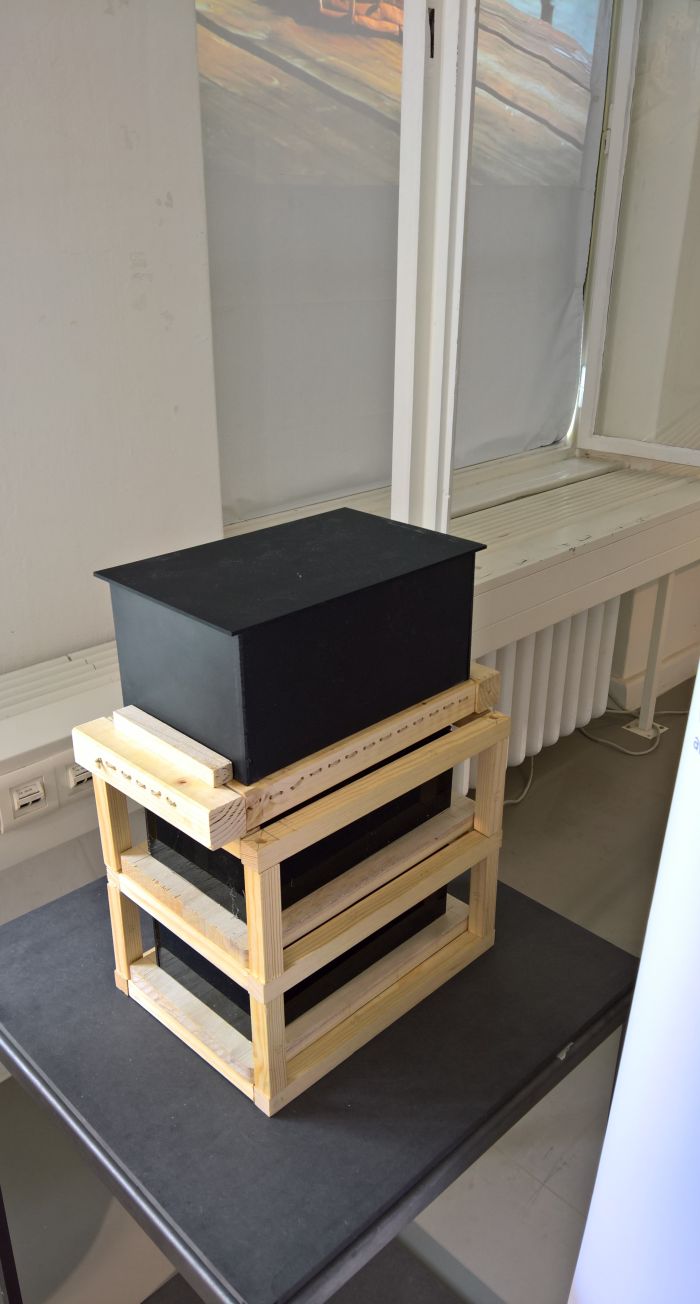
Starting from an exploration of the possibilities of combining hydroponics with vermiculture Louis Bindernagel & Julius Führer developed Tequipanoa as a self contained vegetable production system that uses domestic organic waste as a base raw material.
Unsatisfied at that Louis and Julius moved on to develop the Tequipanoa Community System, a social enterprise which aims to allow for low-cost, low-tech, local vegetable production in areas where such might not be possible. Or advisable. Say on account of soil pollution.
The basis for the Tequipanoa Community System is standard IBC containers - large plastic containers on pallets intended for the transportation of liquids - which are universally used, thus universally available, and which Louis and Julius have converted so as to allow for the integration of their Tequipanoa concept as a compact vertical growing system. And one which in addition aims to provide a stable source of income for local businesses and tradesfolk in terms of constructing and maintaining the systems.
The first Tequipanoa Community System trial is planned for Nairobi, Kenya, the proof of the pudding is always in the eating, and so watch this space.......
Full details on the Universität der Künste Berlin can be found at http://design.udk-berlin.de
